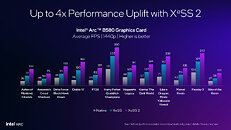Intel appears ready to broaden its Arc "Battlemage" lineup with a new, more powerful desktop graphics card likely to be called the Arc B770, potentially arriving as soon as next quarter. Until now, Team Blue has introduced only two Xe2 Battlemage models, the B570 (10 GB) and B580 (12 GB), both of which earned praise for solid performance at accessible price points. Enthusiasts have long speculated about successors like the B750, B770, and even a B780, but Intel shifted its public focus to upcoming AI PC processors after the B570 launch, leaving GPU fans uncertain which designs would materialize. Recent
shipping manifests uncovered a "BMG‑G31" GPU die en route to Intel's Vietnam assembly plant, the same site that produced limited‑edition B570 and B580 cards, while insider Haze2K1's documents hint at a "B7XX" special‑edition series. Simultaneously, chatter about a
24 GB Developer Edition based on the earlier BMG‑G21 die suggests Intel is also eyeing workstation and creative‑professional markets.
A well-known tipster, OneRaichu, has further fueled excitement by reporting that the Arc B770 could pack between 24 and 32 Xe2 compute units, a 256‑bit memory interface, and 16 GB of GDDR6, positioning it squarely against rival xx60‑series models and promising a meaningful boost in gaming and compute workloads. Beyond Battlemage, Intel's next‑generation graphics architecture, Xe3 "Celestial," has
reached pre‑silicon validation. According to Intel engineer Tom Petersen and corroborating industry leaks, Celestial's core media engines, Xe cores, XMX matrix units, and ray‑tracing hardware are fully designed and are now being tested in a hardware model to fine‑tune power consumption and clock speeds. With Computex 2025 kicking off in late May, Intel may at last clarify both its high‑end Battlemage refresh and the broader Celestial roadmap, potentially reshaping competition in the mainstream and next‑generation GPU markets.
















































































